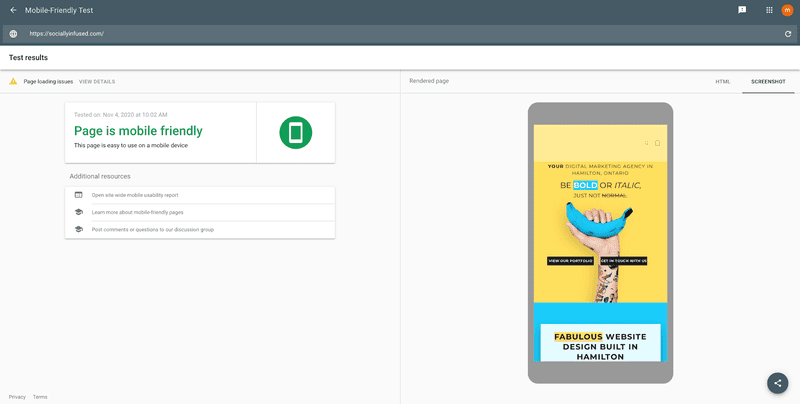What is a mobile-optimized website?
Want the ‘I survived Mobilegeddon T-shirt’? Get yourself a mobile optimized site.
Here’s how.
Mobile UX
The mobile audience is an impatient one. They want to find what they’re looking for NOW.
This means that you need to understand what a mobile optimized design looks like.
In short, they have:
- Cool icons for common assets like shopping carts and contact pages
- Lots of white space
- Simplified navigation
- Fingertip-sized touch screen targets
Mobile site speed
Your site needs to be fast.
Did you know that even a one-second delay in load time reduces your page views by 11%? Your conversions by 7%?
Google has confirmed that site performance is one of its sweet spots, so get it excited by:
- Compressing images
- Cutting down on HTTP request load by minimizing your HTML or CSS file resizes. Gzip is great when you’re looking for quality shrinkage- even better than a cold shower!
Mobile keywords
Mobile keywords are the ultimate post-Mobilegeddon survival tool.
You and your target audience use them to find each other across cyberspace. But you’ve gotta do some work before you hit gold.
Ready for your keyword discovery interview? Here goes!
- Who is your target audience?
- What questions do they have about my product or service?
- What words do they use when searching for information online?
Get those answers right and if you build a site, they will follow.
Speaking of sites, you’re probably wondering if mobile keywords and desktop keywords are different.
They sure are. Here’s why.
- Mobile keywords are shorter: who has time for big words when you’re on the go?
- They use LOTS of abbreviations.
- They even use typos.
“WalMart holiday hours” is mobile. “When does Walmart close today?” is desktop.
See the difference?
Mobile local SEO
Local SEO connects you with local customers.
Since mobile users are on the go, they’re big on location-based search, so you want to stand out. This means:
- Geographical keywords like ‘Hamilton AC repairs’
- Kickass customer reviews on your Google My Business page
- Local citations like a link in the online Yellow Pages or your chamber of commerce website
Want to know more? Check out our local SEO services page!
What’s the bottom line on mobile SEO?
There you have it! The nitty-gritty on mobile SEO so you can nail your mobile optimization strategy in 2021 and beyond. We hope you and your site have a long and happy future together, but if you need some tips for boosting the relationship, check out the articles on our blog.


